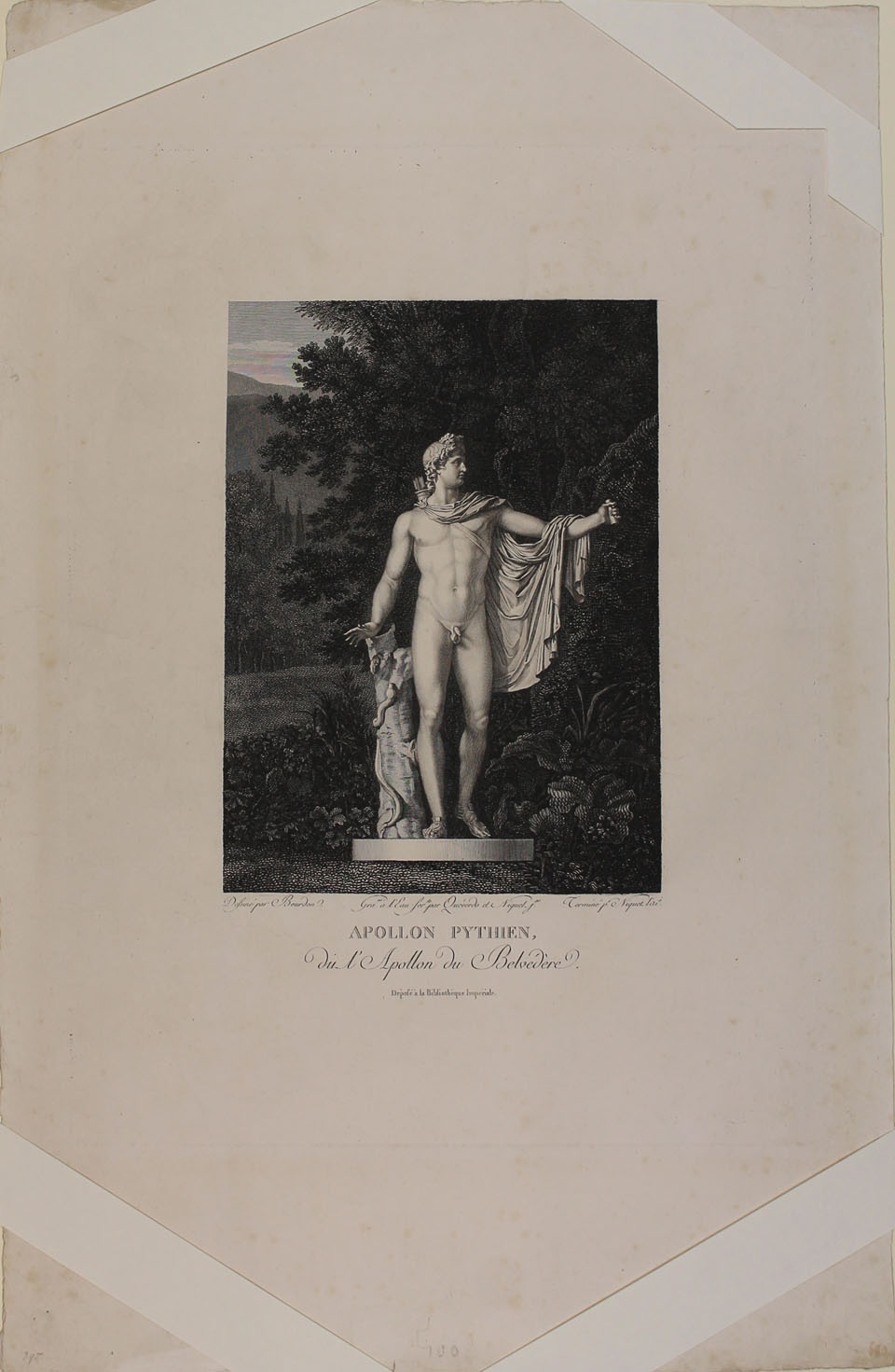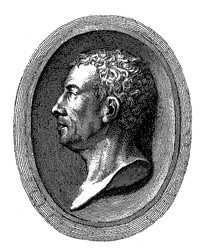Zeichnung: Bourdon
Rad.: Queverdo und Niquet Je. vollend. Niquet l’aue
Die Radierung zeigt den Apollon von Belvedere vor einer grünen Landschaft. Der Gott ist in einem Moment dargestellt, als er gerade einen Pfeil abgeschossen hat. Er ist nackt trägt nur einen Umhang um die Schultern.
Im 17., 18. und frühen 19. Jahrhundert galt der Apollo von Belvedere als die schönste erhaltene Einzelfigur der Antike. Gipsabgüsse der Statue gehörten zu den wichtigsten Studienobjekten im akademischen Kunstbetrieb. Dementsprechend hat ihr Standmotiv zahlreiche Werke der Skulptur und Malerei beeinflusst. Für Johann Joachim Winckelmann war der Apollo von Belvedere „das höchste Ideal der Kunst unter allen Werken des Altertums“.
en

